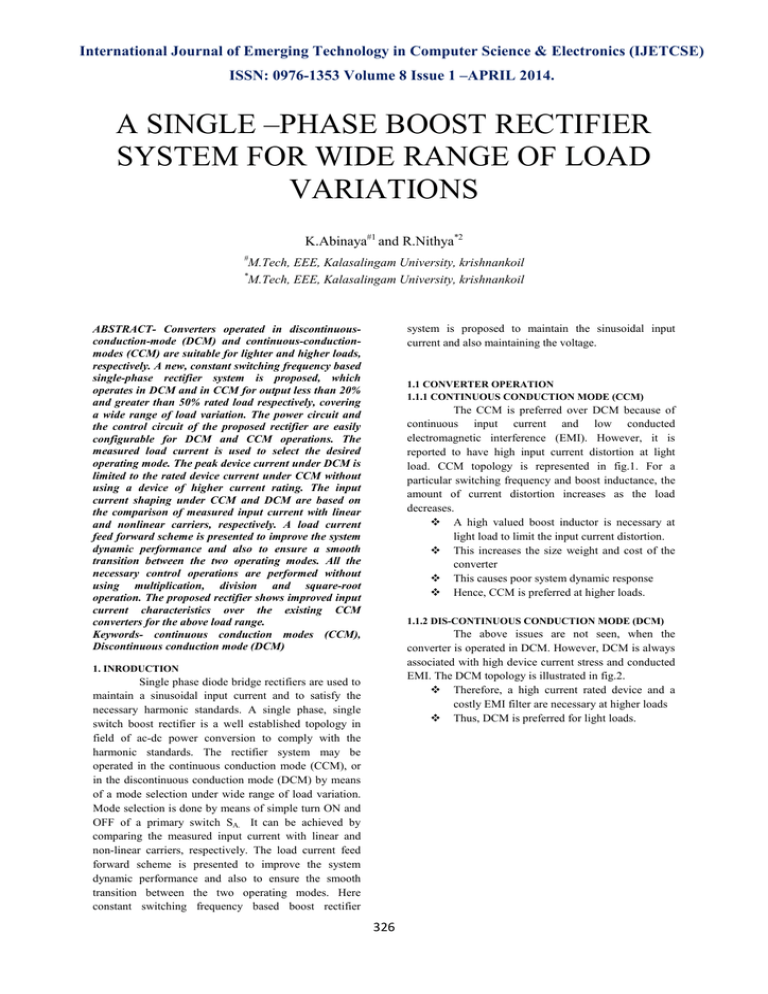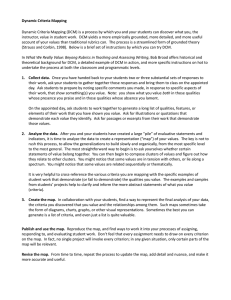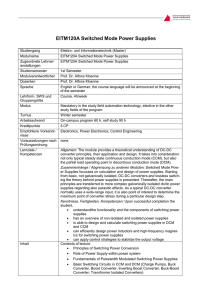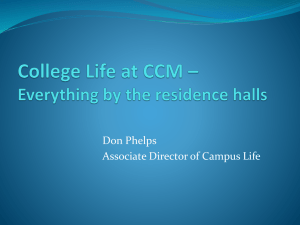a single –phase boost rectifier system for wide range of load variations
advertisement

International Journal of Emerging Technology in Computer Science & Electronics (IJETCSE) ISSN: 0976-1353 Volume 8 Issue 1 –APRIL 2014. A SINGLE –PHASE BOOST RECTIFIER SYSTEM FOR WIDE RANGE OF LOAD VARIATIONS K.Abinaya#1 and R.Nithya*2 # * M.Tech, EEE, Kalasalingam University, krishnankoil M.Tech, EEE, Kalasalingam University, krishnankoil system is proposed to maintain the sinusoidal input current and also maintaining the voltage. ABSTRACT- Converters operated in discontinuousconduction-mode (DCM) and continuous-conductionmodes (CCM) are suitable for lighter and higher loads, respectively. A new, constant switching frequency based single-phase rectifier system is proposed, which operates in DCM and in CCM for output less than 20% and greater than 50% rated load respectively, covering a wide range of load variation. The power circuit and the control circuit of the proposed rectifier are easily configurable for DCM and CCM operations. The measured load current is used to select the desired operating mode. The peak device current under DCM is limited to the rated device current under CCM without using a device of higher current rating. The input current shaping under CCM and DCM are based on the comparison of measured input current with linear and nonlinear carriers, respectively. A load current feed forward scheme is presented to improve the system dynamic performance and also to ensure a smooth transition between the two operating modes. All the necessary control operations are performed without using multiplication, division and square-root operation. The proposed rectifier shows improved input current characteristics over the existing CCM converters for the above load range. Keywords- continuous conduction modes (CCM), Discontinuous conduction mode (DCM) 1.1 CONVERTER OPERATION 1.1.1 CONTINUOUS CONDUCTION MODE (CCM) The CCM is preferred over DCM because of continuous input current and low conducted electromagnetic interference (EMI). However, it is reported to have high input current distortion at light load. CCM topology is represented in fig.1. For a particular switching frequency and boost inductance, the amount of current distortion increases as the load decreases. A high valued boost inductor is necessary at light load to limit the input current distortion. This increases the size weight and cost of the converter This causes poor system dynamic response Hence, CCM is preferred at higher loads. 1.1.2 DIS-CONTINUOUS CONDUCTION MODE (DCM) The above issues are not seen, when the converter is operated in DCM. However, DCM is always associated with high device current stress and conducted EMI. The DCM topology is illustrated in fig.2. Therefore, a high current rated device and a costly EMI filter are necessary at higher loads Thus, DCM is preferred for light loads. 1. INRODUCTION Single phase diode bridge rectifiers are used to maintain a sinusoidal input current and to satisfy the necessary harmonic standards. A single phase, single switch boost rectifier is a well established topology in field of ac-dc power conversion to comply with the harmonic standards. The rectifier system may be operated in the continuous conduction mode (CCM), or in the discontinuous conduction mode (DCM) by means of a mode selection under wide range of load variation. Mode selection is done by means of simple turn ON and OFF of a primary switch SA. It can be achieved by comparing the measured input current with linear and non-linear carriers, respectively. The load current feed forward scheme is presented to improve the system dynamic performance and also to ensure the smooth transition between the two operating modes. Here constant switching frequency based boost rectifier 326 without using any input current sensor. A current sensor is however required for over current protection of the converter. The input current distortion under un DCM is high as there is no low pass filter connected at the input to the converter. The implementation of the above control scheme involves complex mathematic operations, such as multiplication, divisions and square root operations. It also requires thee peak value and the zero crossing instants of the input voltage to compute the unit vectors (sin θ and cos θ). These increase the complexity and cost of the controller. Fig.1 Topology based on CCM 4. PROPOSED METHOD TWO DIFFERENT BOOST INDUCTORS WITH CONSTANT CONST SWITCHING FREQUENCY Two different boost inductors (a high valued inductor for CCM and a low valued inductor for DCM) a new, constant-switching switching frequency based rectifier system is proposed in this paper.. The power circuit of the proposed converter system can be configured either eith for CCM or for DCM by performing a simple on-off on control auxiliary switch. A DCM power topology, with an input side low pass filter is obtained, when the auxiliary switch is on. Again, a CCM power topology (without any filter) is realized, when the auxiliary liary switch is off. A simple, input voltage sensor less, currentcurrent mode controller is proposed for the above rectifier system. The controller works in the principle of oneone cycle control or non-linear linear carrier control, without using any of the above mentioned complex mathematical operations. The required gating pulses for the converter switch are generated by comparing the measured input current with one of the two periodic carriers in a modulator. A linear carrier is used under CCM, while a non-linear carrier er is selected under DCM. The measured load current is used to select the desired operating mode (CCM or DCM).A simple load current feed forward scheme is used to improve the dynamic response of the converter system, which also ensures a smooth transition from one operating mode to the other. Two different boost inductors (a high valued inductor for CCM and a low valued inductor for DCM) a new, constant-switching switching frequency based rectifier system is proposed in this paper. Fig. 1 Topology based on CCM Fig. 2 Topology based on DCM 2. MIXED MODE OPERATION Mixed mode operation is to realize the two distinct operating modes (DCM and CCM) into a single converter system without introducing any appreciable dynamics during transition between the two operating modes. There are two possible ways to achieve this. A single valued boost inductor with constant but two different switching frequencies (a low switching frequency for DCM and high switching frequency for CCM) for the above operation. Two different boost inductors (a high valued inductor for CCM and Low valued valu inductor for DCM) with a constant switching frequency. In first method the switching frequency of the converter is to be changed. The second method requires the physical inductors to be changed. It deals with a constant output voltage application, where the load current varies over a wide range (10% to 110% of the rated load current) and the converter is required to comply with the necessary harmonic standards. It can be seen from the above discussion that neither of operating oper modes (CCM and DCM) alone is suitable and economical for the above application. Therefore, the optimum choice is to operate the converter in DCM during light loads and in CCM for higher loads. The load boundary between DCM and CCM operations can be set et at a suitable level (say 20%20% 50%) to limit the peak device current under CCM without using a higher current rated device. Similarly, the minimum load under CCM, for which the converter is required to comply is 50% rated load. This permits us to use a low w valued boost inductor compared to the entire 3. CONVENTIONAL METHOD A SINGLE VALUED BOOST INDUCTOR WITH W TWO DIFFERENT SWITCHING FREQUENCIES A converter system, using two different switching frequencies (2.56 kHz for DCM and 25.6 kHz for CCM) and a single valued boost inductor has been reported. The use of two different switching frequencies introduces difficulties fficulties in designing the EMI filter. The controller works in the principle of voltage mode control 327 CCM case without any degradation is the performance of the converter. Let us consider a case, when the converter system is required to be driven into DCM from its original CCM operation. This means that the switch SA , which was originally off is now required to be closed. When the converter is operated under CCM, the inductors Lb (dcm) and Lf carry the same instantaneous current (Ig=ig), while the filter capacitor Cf does not carry any current. Under this condition SA can be closed at any instant with zero current switching to drive the converter system into DCM. Now, let us consider the other possibility, i.e., the converter system, which was initially operating under DCM and is required to be driven into CCM. This is shows that, under DCM the instantaneous currents carried by the inductors Lb (dcm) and Lf are different. Nevertheless, it can be shown that the current (Ig-ig), through the switch SA, passes through zero twice in a switching cycle. Now we try to open SA at an instant ig ≠ Ig, the different current (Ig-ig) will flow momentarily through SA. This can cause over-voltage across SA, which can damage the switch. In order to avoid this situation, we proposed two anti-parallel thyristors, each conducting during one half-cycle of the switching frequency current components, for the realization of SA. Now both turn on and turn off of the thyristors are at zero current (i.e., ig =Ig) ensuring the smooth transition from DCM to CCM and vice versa. The suitable control circuit for both CCM and DCM operations are given as follows. 5. SINGLE -PHASE RECTIFIER SYSTEM A single-phase, single switch boost rectifier is representing the DCM and the CCM topologies respectively. A low pass filter (Lf Cf) is used in the DCM topology for filtering the switching current harmonics, which is absent in CCM topology. Further, it can be shown for the same switching frequency, the value of the boost inductor Lb (dcm) is much lower than Lb (ccm). Thus, for the same switching frequency, the DCM topology is not suitable for CCM operation and vice-versa. Similarly, it can be shown that the control scheme, suitable for CCM application may not be useful in DCM operation and vice versa. Therefore, a common rectifier system (power circuit topology and control scheme) is required to be developed, which is suitable for both CCM and DCM. Such a rectifier system is developed in this section. 5.1 POWER CIRCUIT TOPOLOGY The proposed power circuit topology is originally derived from the DCM topology. It is illustrated in fig.3. There are two separate inductors Lf and Lb (dcm) and a filter capacitor Cf used in power circuit as shown in diagram. The auxiliary switch SA may be turned on to realize the DCM topology. The combination Lf Cf serves the purpose of the input low pass filter, while the inductor Lb (dcm) acts as the effective low valued boost inductor. 5.2 CONTROL CIRCUIT TOPOLOGY The main objective of the control circuit is to shape the average input current Ig follow the input voltage vg, where R is the desired input resistance of the converter. The next objective is to maintain the output voltage VO at the desired reference level against all possible input voltage and load variations. This can be achieved by regulating the input power to the converter through R. Another important objective is to generate gating pulse under DCM and CCM operation. Here the carriers vc. (dcm) and vc (ccm) can be generated using simple op-amp based integrator and amplifier circuits as shown. The integrators are reset at the beginning of each switching cycle by a constant frequency clock of negligible pulse width. Here the required gating pulses for the switch can be generated by comparing the measured input current with the above carriers vc.(dcm) and vc (ccm) in the comparator. The converter system is required to be operated in DCM during lighter load and CCM for higher load. So the gate pulse can be generated by means of an above control circuit topology as shown in fig. 4 . Fig.3 Power Circuit Topology The switch SA can be turned off, when the CCM topology is to be realized. The filter capacitor Cf remains ineffective in the power circuit, while the series combination of Lf and Lb (dcm) acts as the effective high valued boost inductor Lb (ccm). From fig.3 it is shown that by simple on-off control of switch SA, we can realize two different power topologies (i.e. DCM & CCM) using a single converter system, while maintaining a constant switching frequency throughout the process. Now it is required to understand the various issues associated with turn-on and turn-off instants of the switch SA and to propose a suitable semiconductor switch for its realization. 328 simple load current feed eed forward scheme is used to improve the dynamic response of the converter system against sudden change in loads. This also ensures a smooth transition from one operating mode to other. The experimental results shows that proposed rectifier system with mixed mode operation gives better input current characteristics for the wide range of load variation compared to the case, when it is operated completely in CCM for the given load range. REFERENCE [1]. Davoudi, J. Jatskevich, and T. De Rybel, “Numerical state space average value modeling of PWM DC–DC DC converters operating in DCM and CCM,” IEEE Trans. Power Electron., vol. 21, no. 4, pp. 1003–1012,Jul. 1003 2006. [2]. Sreekumar and V. Agarwal, “Hybrid control of boost converter operating in discontinuous current mode,” mode in Proc. 37th PESC,, Jeju, Korea, Jun. 2006, pp. 255–260. 255 [3]. Haci Bodur, A. Faruk Bakan, “A “ New ZVT-ZCT-PWM DC-DC Converter,” IEEE Trans, Power Electronic., vol.19, no.3, May 2004. [4]. R.K.Tripathi, pathi, S.P.Das, and G.K.Dubey, “Mixed-mode operation of Boost switch-mode mode rectifier for wide range of load variations,” IEEE Trans, Power Electronic., Electronic vol.17, no.6, pp.999-1009, nov.2002. Fig.4 Control Circuit Topology 6. CONCLUSION [5]. J. Sun, D. M. Mitchell, M. F. Greuel, P. T. Krein, and R. M. Bass, “Averaged modeling of PWM converters operating in discontinuous conduction mode,” IEEE Trans. Power Electron., ., vol. 16, no. 4, pp.482–492, pp.482 Jul. 2001. A single-phase, phase, constant switching-frequency switching based rectifier system is designed to maintain the sinusoidal input current near unity power factor under wide range of load variations. The above rectifier system is operated under DCM for output less than 330W and in CCM for output greater than 330W, Exploiting the best features of both operating methods. The power circuit of the proposed converter can be configured either for DCM or for CCM by simple ON-OFF OFF control of an auxiliary switch. ch. Similarly, the proposed control circuit can also be configured either for CCM or DCM simply by choosing the appropriate carriers (a linear carrier for CCM and a non-linear linear carrier for DCM). The measured load current is used to select the desired operating ing mode. The required switching instants are generated by comparing the measured input current with one of above carriers in a modulator without using any multiplication, division, square root operation , and input voltage sensing. A [6]. R.Ghosh and G.Narayanan, “Input voltage sensor less average current control technique for high-power high factor boost rectifiers operated in discontinuous conduction mode,” in Proc.IEE APEC’05,March.2005, APEC’05,March.2005 vol.2, pp.1145-1150. [7]. J.Sebastian, M.Jaureguizar, and J.Uceda, “An over view of power factor correction in single phase off line power supply systems,” in Proc.IEE--IECON’94, sep.1994, Vol.3, pp, 1688-1693. [8]. K.D.Gussein, D.M.Van de sype, A.P.Van den Bossche, and J.A.Melkebeek,” Sample correction for digitally controlled boost PFC converters operating in both CCM and DCM,” in Proc.IEE APEC’03, APEC’03 Feb.2003, vol.1, pp.389-395. 329





